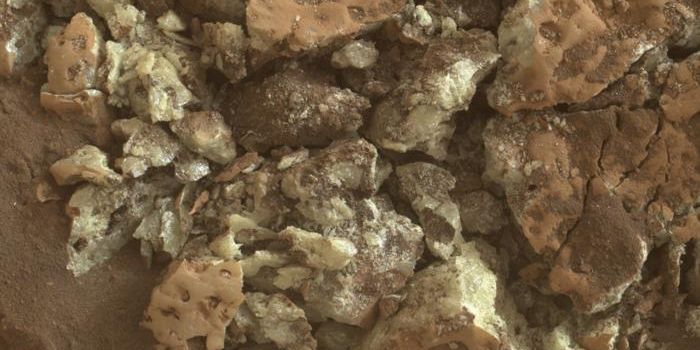Solar System Wonders: Mars Polar Caps
It turns out Earth isn’t the only planet with polar caps, as Mars has both a north and south polar cap, but instead of being made of frozen water, these caps are made of frozen carbon dioxide, since carbon dioxide is the dominant substance in the Martian atmosphere. These polar caps not only change due to the varying seasons on Mars, but also change due to changes in Mars’ axial tilt, which doesn’t have the same stability as Earth’s due to a lack of a large moon to stabilize it.
The northern polar cap of Mars is quite large, spanning approximately 621 miles (1000 kilometers) across and 1,2 miles (2 kilometers) deep. This cap has been examined in great detail by numerous Mars orbiters, revealing subsurface geology to include deep troughs and large canyons and chasms.
June 2019 image of the north polar cap of Mars. (Credit: ESA/DLR/FU Berlin, CC BY-SA 3.0 IGO)
The southern polar cap of Mars is much smaller than the north cap, spanning only 260 miles (420 kilometers) across. Much like the northern cap, the southern cap also exhibits layered geology.
December 2012 image of the south polar cap on Mars. (Credit: ESA/DLR/FU Berlin, CC BY-SA 3.0 IGO)
As stated, the polar caps not only react to the changing seasons on Mars, but also in response to the axial tilt change of the entire planet. Currently, the axial tilt of Mars is approximately 25 degrees, but can get as high as 45 degrees, causing the polar caps to move to the equator of the Red Planet. The axial tilt change occurs on timescales of hundreds of thousands to millions of years and has profound effects on the planet’s atmosphere and surface.
Sources: NASA, NASA (1), NASA (2), NASA (3)
As always, keep doing science & keep looking up!










